Another New Croatian Bridge Planned for Central Dalmatia
September the 26th, 2022 - Peljesac Bridge might have taken all of the limelight away from, well, just about everything else for a while, but there will soon be another Croatian bridge in town.
As Morski writes, by the end of this year, Croatian Roads (Hrvatske ceste) will announce a tender for the technical and design solution of the new bridge over Kastela Bay, which will connect Split and Kastela and at the same time represent the fastest connection of the second largest city in the country with a highway, this state-owned company confirmed for tportal.
This facility is part of a wider project called ''New entrance to Split/Novi ulaz u Split'', and it includes the construction of a new road from the Vucevica intersection on the highway, through the Kozjak tunnel and over the two-lane road to Kastela, then over the aforementioned bridge into Split and then finally to the ferry port. It is worth several billion kuna and four years ago it was included in the list of strategic projects of the Republic of Croatia.
It was announced that the part from Vucevica to Kastela will be financed by Croatian Roads from its own resources, including the tunneling through Kozjak, and for that part of the investment, the public procurement procedure for the execution of the works for this new Croatian bridge has already been initiated. The documentation for the bridge itself will be prepared for financing from European Union (EU) funds.
While it won't take anywhere near as long as Peljesac Bridge did to come to fruition, the completion of the entire project for this new Croatian bridge in Central Dalmatia is not expected before the year 2027.
In addition to the traffic connection of the congested Split agglomeration, the ''New entrance to Split'' project should result in a welcome a twenty-kilometre shorter journey between this city and the City of Zagreb, and finally enable Kastela to have a direct connection with the highway. In addition, it will bring a new road access to Split itself, a city located on a peninsula, which has been dependent on two roads on its eastern part for many decades now.
Apart from the confirmation of the tender for the new bridge, Croatian Roads did not want to provide any additional information on this topic.
Across the wider Split area, Croatian Roads currently implementing several projects worth several billion kuna, but despite the announcements, physical works haven't yet started in most of them. It is precisely in this area that the two busiest points in all of Croatia are located, the intersections of Solin and Stobrec, which are used by about 60,000 vehicles on a daily basis, while the ferry port with five million passengers a year is almost impossible to access during the hot summer months.
For more, make sure to check out our dedicated business section.
Split Destinations You Can Visit Using Public Transport
May 24, 2022 - You can spend a large part of your itinerary in the city centre, but did you know that you can get to know many interesting Split destinations by bus? We're going to show you how.
Whether it is a short visit or for a week, the City of Split can fill your itinerary with activities of all kinds, sights, gastronomic spots, and much more. But what if you feel the need to explore your surroundings? Surely from the window of your plane, shortly before landing, you noticed that Split is much more than just its centre. In the high season, you may want a little respite from the crowds, so why not explore some of the nearby Split destinations? By using public transport, you can save yourself the fees of renting a car to visit these relatively local destinations, as well as the tedious search for parking in the city.
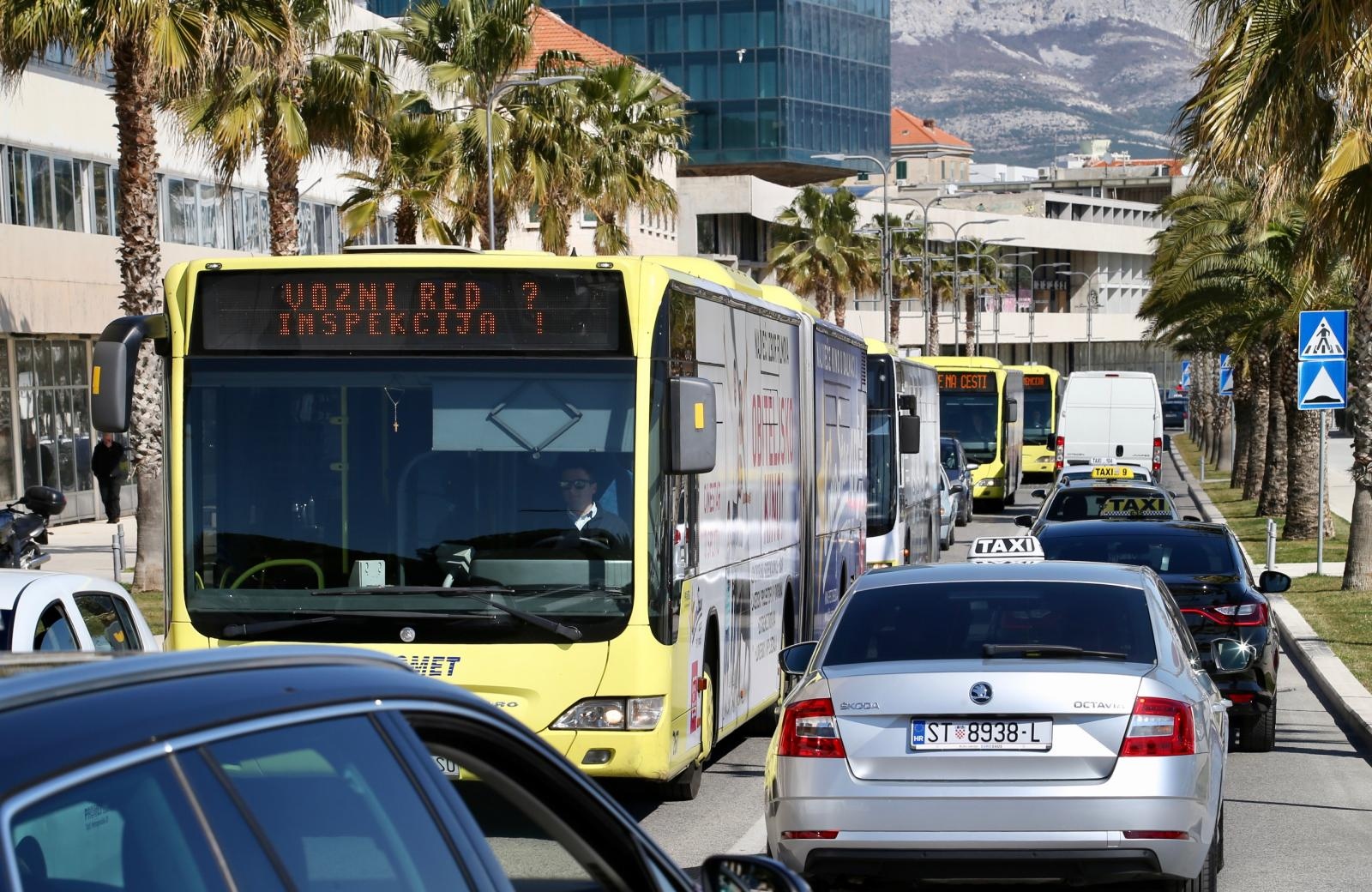
Photo: Ivo Cagalj/PIXSELL
The public transport system in the City of Split is called Promet (Traffic) and its buses can take you beyond the centre. The bus network is divided into four zones, and that is how ticket prices are determined (based on proximity to the very centre). If you're very clear about where you're going, you can buy your tickets at the Tisak stands indicating the area you are going to, or you can also pay the bus driver himself, indicating the exact destination you are going to.
The prices of bus tickets by zone are as follows:
Zone 1: 9 kuna
Zone 2: 13 kuna
Zone 3: 17 kuna
Zone 4: 21 kuna
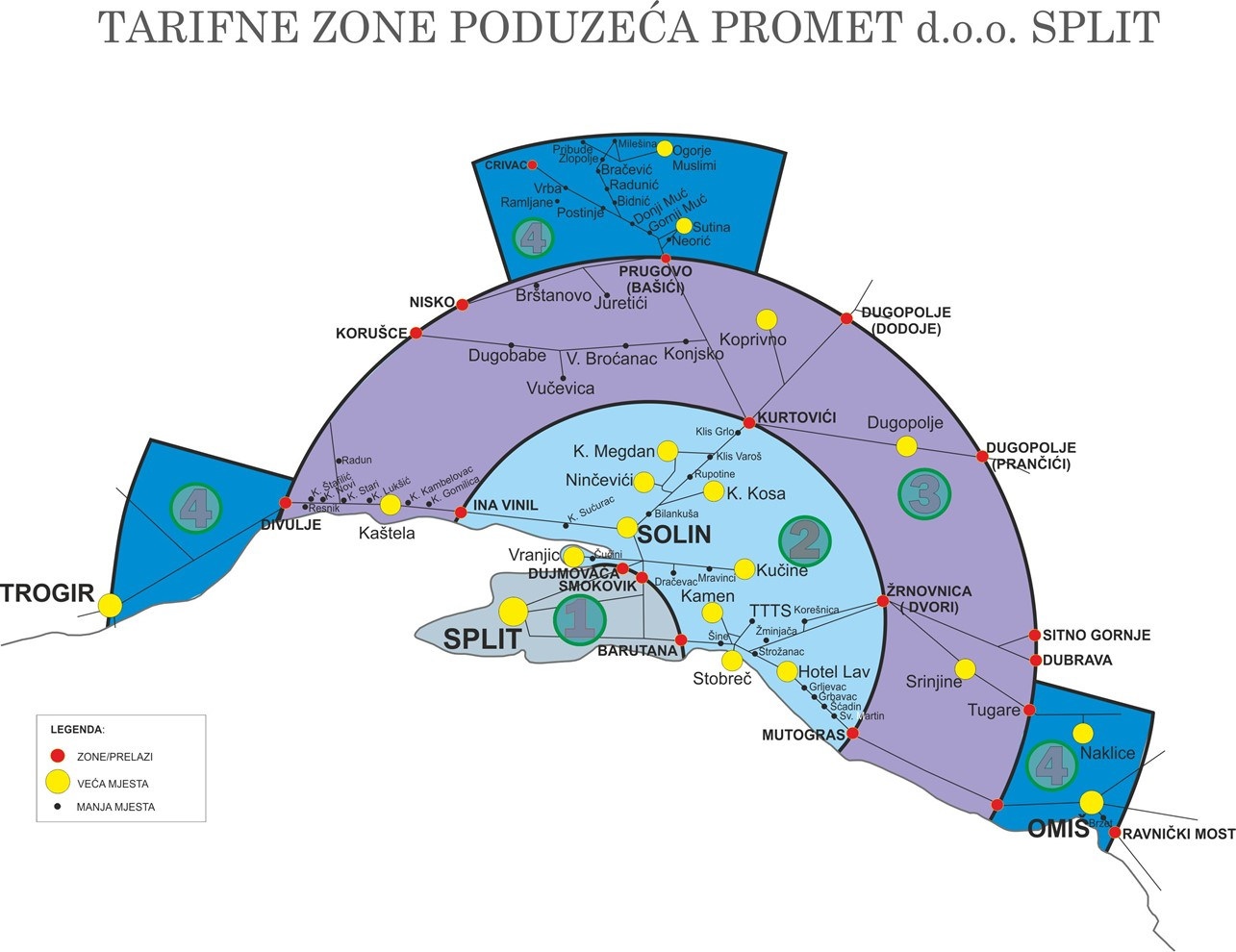
Image: Promet Split
Now, the question is, where do you want to go? Generally, everything in the centre of Split is part of Zone 1. You can choose between beautiful and less crowded beaches, small and picturesque old settlements, or even historical places beyond that zone. The choice is yours. Here are some ideas for Split destinations you can visit in zones 2, 3 and 4 with the city's public transport system.
ZONE 2
Solin
Solin is located very close to the centre, just northeast of Split. Originally called Solana, it was a Greek colony founded in the 3rd century BC, and later a Roman colony. At that time, it ended up becoming the fourth largest city in the entire Roman Empire. For a zone 2 ticket to Solin, you can go ahead and visit its impressive ruins. You'll need to get on bus number 2 (Split - Poljička - K. Sućuraj (Strinje) - Split Airport), or bus number 38 (Split - K. Stari - Resnik).
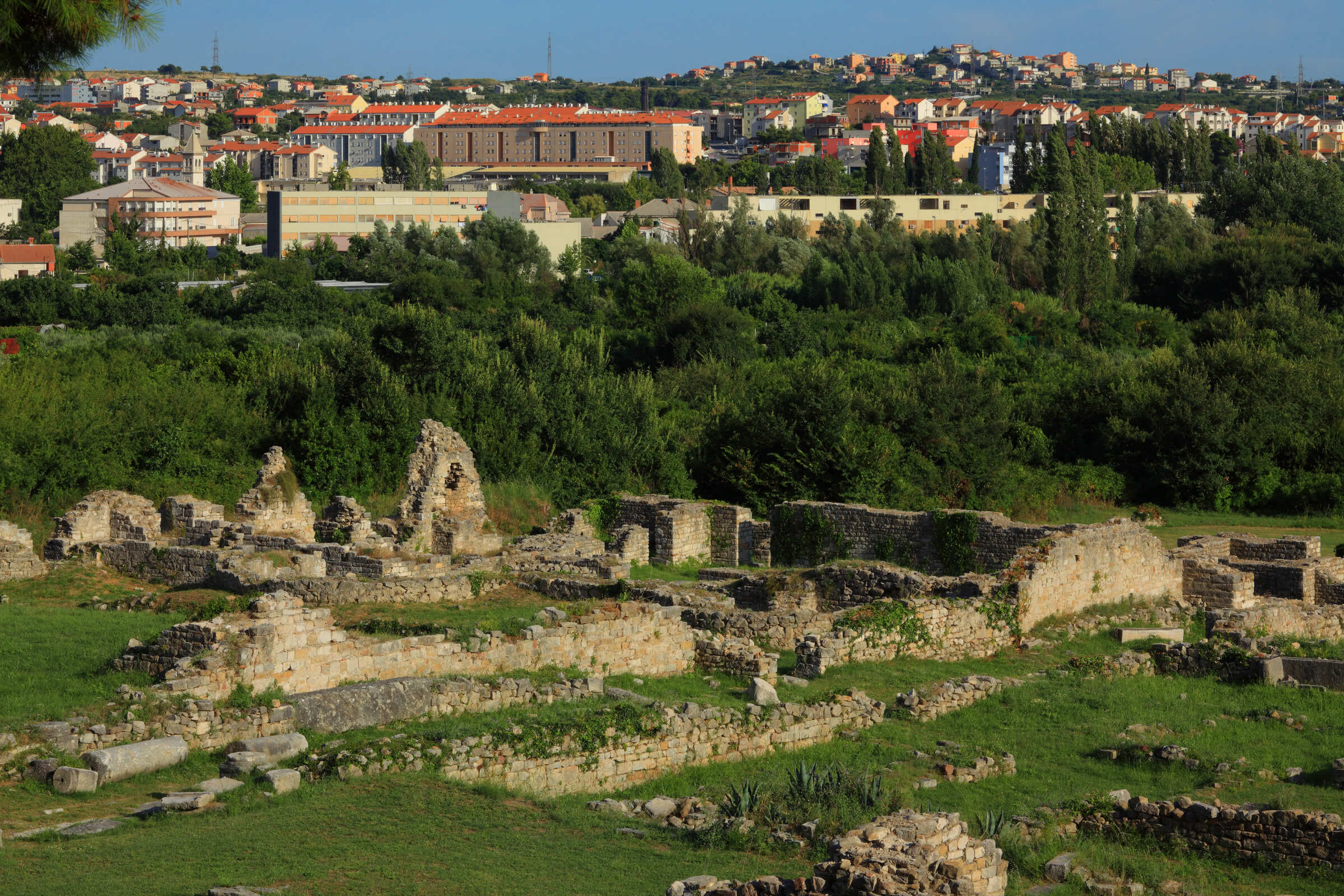
The ruins of Solin. (Photo: Mario Romulić)
Stobreč
On the southern loop of Split zone 2, Stobreč is the first destination you can get to. It's ideal if you are looking for somewhere nearby to relax and with a good number of bars and restaurants. Stobreč also has a golf course, if that's your thing. You'll need to get on bus number 60 (Split-Omiš) or number 25 (Split-Stobreč).
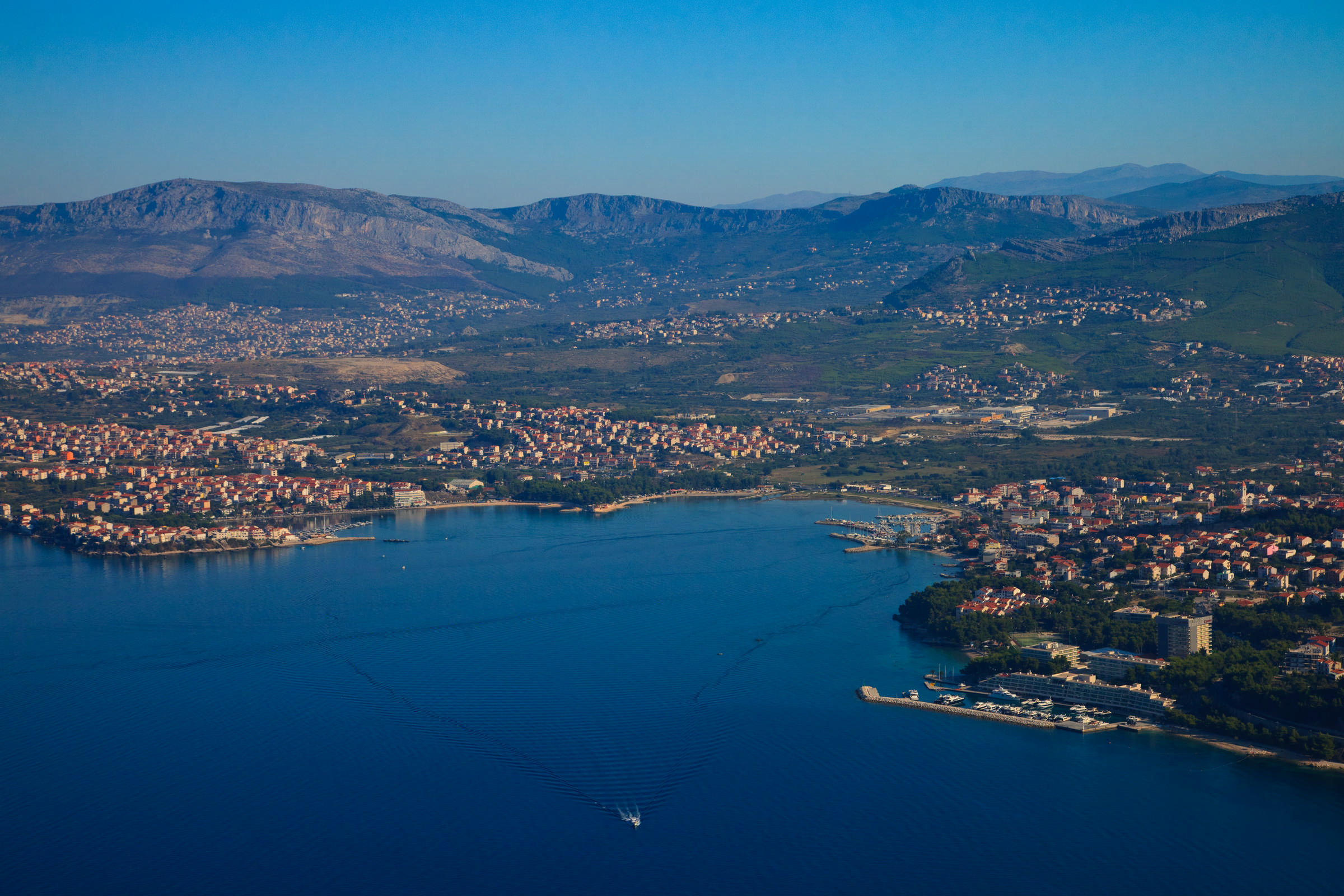
Overview of Stobreč. (Photo: Mario Romulić)
Podstrana
Passing Stobreč, you'll reach Podstrana. Podstrana has a large number of beautiful beaches, with bars and restaurants on them. I always say, if you are looking to enjoy the sea in Split and away from the crowds, go to Podstrana. If you're looking for something other than the beaches, you can also go hiking in the surrounding hills or kayaking on the Žrnovnica river. Did you also know that legends say that Podstrana is where the famous King Arthur could have been buried? You'll need to get on bus number 60 (Split-Omiš) to get here.
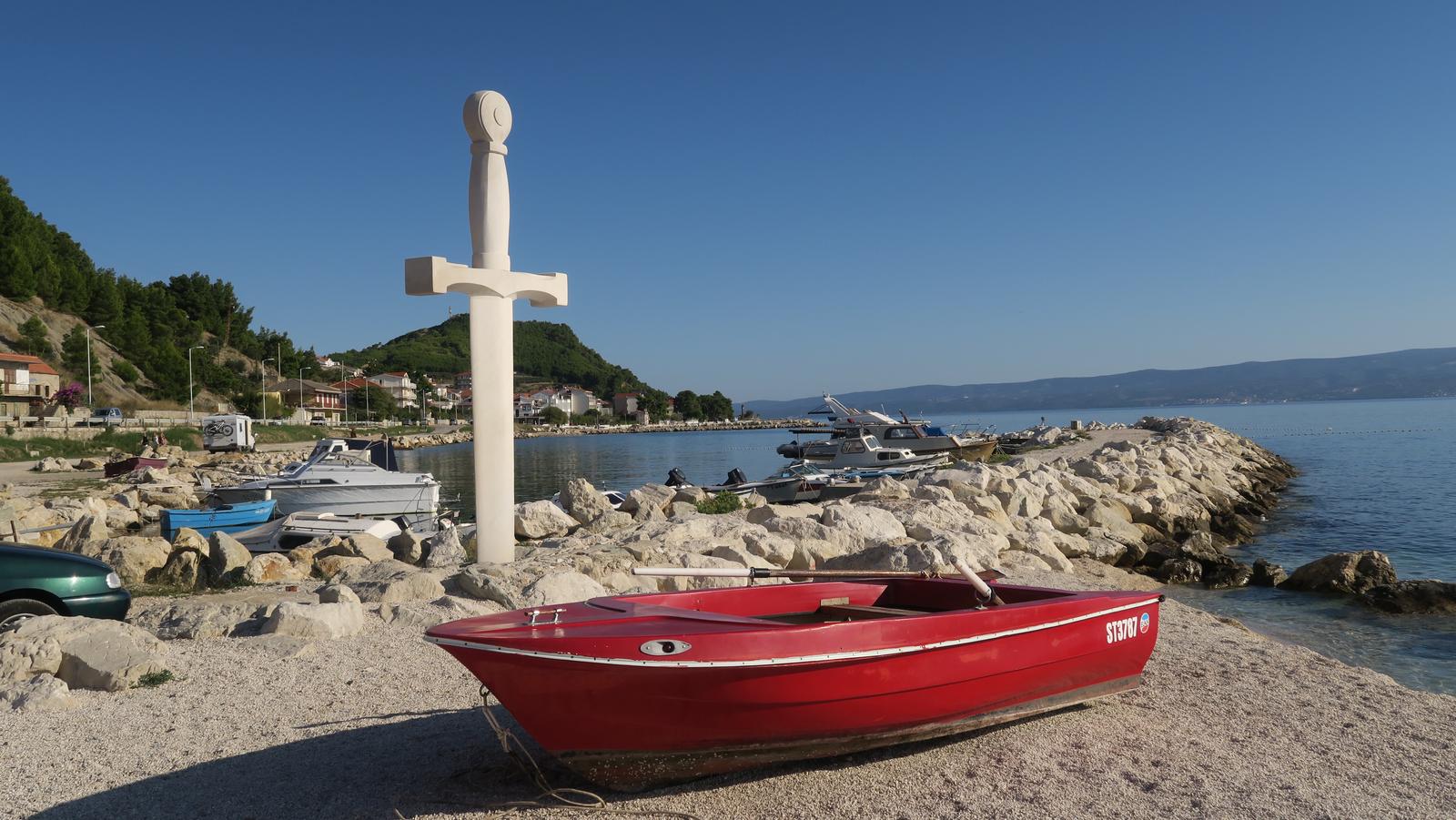
The sword of Artorus, in Podstrana. (Photo: Ivo Cagalj/PIXSELL)
ZONE 3
Kaštela
Please note that there is more than one Kaštela! It won't be something that will have much relevance when paying for your ticket, since they're all in the same area. Kaštela is located northwest of Split, on the way to the airport. No matter which Kaštela you decide to go to, be sure to enjoy its promenades, beaches, and marinas! You'll need to get on bus number 2 (Split - Poljička - K. Sućuraj (Strinje) - Split Airport), or bus number 38 (Split - K. Stari - Resnik).
Krilo
If you pass Podstrana, heading south, you will enter zone 3. There are many places that you can visit almost in succession: Mutogras, Jesenice, Sumpetar, Dugi Rat... Krilo has very nice beaches, as well. You'll need to get on bus number 60 (Split-Omiš).
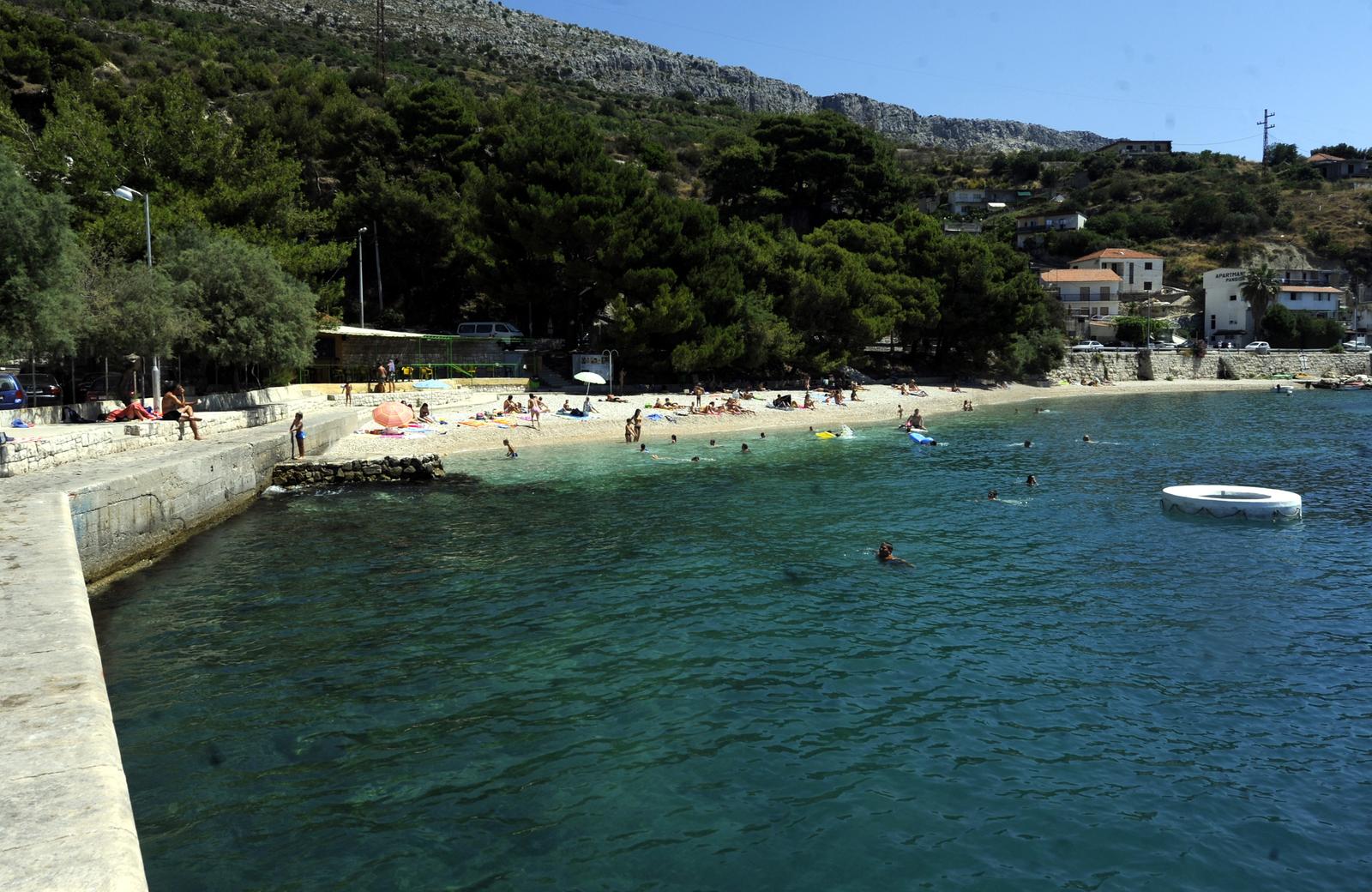
Krilo. (Photo: Tino Juric/PIXSELL)
ZONE 4
Duće
Duće is one of the last destinations in zone 3 to the south. Many continue on to Omiš, but Duće is a place that deserves all your attention for its beautiful beaches and camping sites. You'll need to get on bus number 60 (Split-Omiš).

At the beginning of Zone 4, just before Omiš, you'll find Duće. (Photo: Mario Romulić)
Trogir
Passing the Split Airport, you'll find the very ancient and picturesque town of Trogir. Often regarded as the miniature version of Split, its beautiful promenade and narrow streets will stick in your mind for a long time. A good idea is to find pristine beaches in the bridge-connected island of Čiovo. You'll need to get on bus number 37 (Split - Split Airport - Trogir).
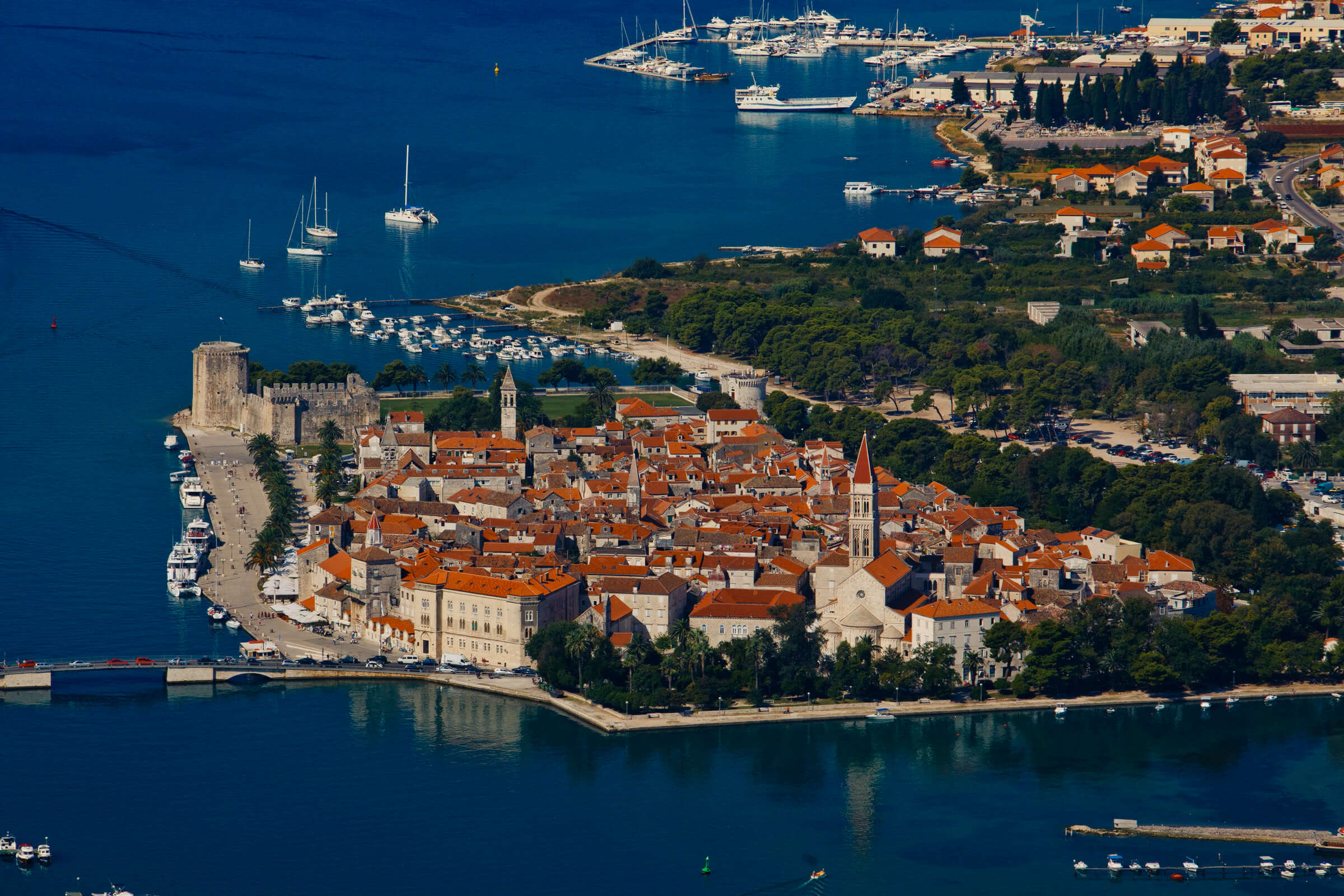
Trogir. (Photo: Mario Romulić)
Omiš
Omiš is one of the most popular and largest towns on the coastal road between Split and Dubrovnik. Just 40 minutes from the center, Omiš is a true jewel of the Dalmatian coast, with beautiful old streets, the Cetina canyon, and wonderful beaches. You'll need to get on bus number 60 (Split-Omiš).

Omiš. (Photo: Mario Romulić)
For more information on Split's bus system, be sure to check the official website of Promet.
For more on travel in Croatia, follow TCN's dedicated page.
Marine Pollution Solution in Kaštela Bay Presented as Part of PEPSEA Project
March 12, 2022 - Equipment to prevent marine pollution within the "PEPSEA" project was presented at the St. Florian Fire Center in Kaštel Gomilica. These are dams, cameras, drones, sensors, and similar equipment intended primarily to prevent marine pollution.
This is an EU project in which the partner is Split-Dalmatia County, with the Zadar County Development Agency ZADRA NOVA, Adriatic Educational Research Center for Response to Sudden Marine Pollution - ATRAC, Šibenik-Knin County and partners from Italy - Consorzio Futuro in Ricerca, Regional Agency for the Protection of the Ambient of Friuli Venezia Giulia, Enté Parco Regional Veneto del Po del and the Chamber of Commerce of Bari, reports Lokalni.hr.
"The value of the project is in raising awareness about marine pollution. It is important to detect pollution quickly. The drone, cameras, and information collection center are the most important segments of the project. Rapid detection of pollution is more than three-quarters of the work," says Split-Dalmatia Prefect Blaženko Boban.
The head of the Administrative Department for Tourism and Maritime Affairs and the project manager Matea Dorčić emphasized that the equipment had been procured and the project was nearing completion.
"When we wrote the project, we thought about which is the most endangered area and where this equipment should be deployed. Everyone involved in the project immediately said that it should be the eastern part of Kaštela Bay," said Dorčić.
County Fire Chief Ivan Kovačević is also pleased.
"This is just one in a series of projects in which the County is behind us. I can only say that with the understanding and responsible behavior of Split-Dalmatia County, we can sleep much more peacefully," said Kovačević and added that firefighting is a job in which the consequences are usually remedied, and with this equipment, significant progress is made in preventing major disasters.
Martina Vukašina from the Zadar Agency NOVA expressed satisfaction that the project is nearing its end and pointed out that the cooperation is moving along nicely
Luveti also delivered a total of 1,500 meters of dams.
"They are floating inflatable, floating rigid and absorbent. In addition, these dams are supplied with different types of skimmers and tanks that can float on water and tanks that are placed on land, thus ensuring all the pollution that may come," said Zoran Delaš from Luveti d.o.o.
Smart navigation system d.o.o. supplied a non-contact sensor installed above the surface to examine the quality of the sea and report possible pollution. The stainless steel sensor is installed on the "Pličina-Purič" buoy located at the pilot site and is owned by Plovput d.d. The sensor is connected to the GIS system, given for unrestricted use to the County Fire Operations Center, which is already on 24-hour duty.
Securitas d.o.o delivered the drone.
"The drone can be of immeasurable importance during the needs of monitoring the cleanliness of the sea, but also during other needs of firefighters such as fire detection, search and rescue," said Neven Pijanović from Securitas.
The company supplied two more fixed cameras to monitor marine pollution, which is located at the height of 30 meters.
The presentation was also attended by Vedran Martinić, director of ATRAC, the Adriatic Educational and Research Center for Response to Sudden Marine Pollution, who praised the choice of location for the installation of equipment.
For more, check out our lifestyle section.
Darijo Srna Bringing 33 Shakhtar Donetsk Cadets to Kaštel Lukšić
March 10, 2022 - Former Croatia captain and current Shakhtar Donetsk director of football is bringing 33 Shakhtar Donetsk cadets to Kastel Lukšić.
A group of 33 children from Ukraine, namely young Shakhtar Donetsk footballers, will be accommodated in the branch of the Children's Home Maestral in Kaštel Lukšić with the mediation of former Croatia footballer and captain Darijo Srna. Recall, Srna played for Shakhtar and wore the captain's armband from 2003-2018, and now acts as the director of football at the club, reports Gol.hr.
"During the day, we expect the arrival of these children from Ukraine, which will be located in our branch 'Miljenko and Dobrila' in Kastel Lukšić, and Darijo Srna will mediate their arrival in Croatia," said Jelena Burazin, director of the Maestral Children's Home in Split.
According to Burazin, the management of that Home received an inquiry for the accommodation of this group of children from Ukraine, and a decision was made to place them in the branch of that Home in Kaštel Lukšić.
At the request of former Vatreni captain and long-time Shakhtar player and former Dinamo player Darijo Zahora, the young Ukrainians left the recently war-torn Ukraine, and Dinamo Zagreb sent buses to the Hungarian-Ukrainian border.
Dalmatinski Portal reports that at the same time, classes at Zlatna Vrata (Golden Gate) will be organized for adult Ukrainians. Considering that so far they have mostly come to Dalmatia in private arrangements, through friendships or nurturing relationships as long-term guests, it is not known exactly how many of them are in Split, the hinterland, and the islands. It is estimated that there are at least 500.
The director of Zlatna Vrata, Danijela Ćukušić, is preparing the program, depending on those interested. However, it is likely that an online program will also be offered as many Ukrainians have found happiness on Šolta Island and are not in Split.
"What I want to emphasize on this occasion is that we invite all children to join us, for free of course, at the Academic Handball Club Split. Our door is open to them. Sport is one of the best ways to assimilate, to get through these difficult moments as easily as possible," says Ćukušić.
To read more about sport in Croatia, follow TCN’s dedicated page.
Croatian Monte Carlo: New Kaštela Promenade Project to Change Face of Coast
March 5, 2022 - The new Kaštela promenade will transform the waterfront into the Croatian Monte Carlo, says Mayor Denis Ivanović.
Since the beginning of the first term, one of the main goals of the current city government has been clear. Along with caring for young people and building communal infrastructure, arranging the coastal part of Kaštela is the main priority, evidenced by millions of investments in the already unrecognizable, more than 20 kilometers long coast, located along the unique Kaštela Bay.
Kaštela is unique in many ways. It comprises seven villages, without a classic center, and is the only city in Croatia with six postcodes. It is probably the only one in the world directly bordering two UNESCO cities with the oldest, more than 1,500-year-old olive tree. It is a town with three football clubs, three fire brigades, three carnivals, and it will soon become the Croatian "Monte Carlo," a destination with nearly 20 kilometers of coastline as a prerequisite for the development of tourism and the economy.
On City Day, which is celebrated on March 4, Slobodna Dalmacija spoke with Denis Ivanović, the mayor of the second-largest city in Split-Dalmatia County, about the implemented projects but also those that will follow on the coastal part of Kaštela.
"Even before I became mayor, i.e., in the election campaign, I promised that the focus of my work would be landscaping. So naturally, this is a priority for city authorities and those at higher levels, from county to state. That we are going in the right direction is evidenced by the fact that an active project to build a new port and coast in Kaštel Stari is currently in the final stages despite the health crisis surrounding the coronavirus pandemic.
This is the most financially expensive project of the County Port Authority since its existence, in which almost 15 million kuna was invested from our budget. At the same time, the rest of the funds were provided from the Split-Dalmatia County Port Authority and other sources. With this project, a breakwater almost 200 meters long was built. In addition, a total of 9,500 square meters of the coastal belt was arranged, including stonework, horticultural landscaping, and nautical electricity and water connections.
Through this project, the people of Kaštela will get 150 communal berths for the domicile population, i.e., for those who use boats for entertainment and sports, but also completely change the look of the Kaštel Stari old town," says Ivanović.
The investment is worth almost 50 million kuna. In addition to the 15 million from the city, the County Port Authority has allocated about 30 million kuna. The rest of the money was provided by Split-Dalmatia County, the state, and the Ministry of the Sea.
"This is truly the largest investment in the coastal part of Kaštela, and our goal is for residents to get a modern utility project that will serve them in the first place, as well as tourists from whom we live for a good part of the year.
"The project in Kaštel Stari will certainly affect economic development, and we are glad that all the work took place without any interruptions and delays. The arrangement of this communal port is one of the major projects in the past decade in the area of Kaštela," adds the mayor.
When asked what the next projects are for the coast, the mayor announced an investment boom with one goal: Kaštela will be the Croatian Monte Carlo.
"After we soon complete the new port and coast in Kaštel Stari, and it is a matter of days when that will happen, we will start with a new investment, which is the complete arrangement of the Kaštel Novi coast, from Kaštel Stari to the Ćipiko tower, worth about 50 million kuna, and the Ministry of the Sea and the Split-Dalmatia County are ready to help with financing.
This project will completely change the look of Donji Kaštela, which is why it is called the "New Face of Kaštela," emphasized Ivanović.
Namely, the planned project will significantly expand the existing waterfront into the sea, arrange the entire promenade and the city's coastal part, roads, various facilities, and horticulture.
"So, that part of Kaštela will take on a completely new look as Kaštel Lukšić did after we arranged and built the most beautiful and most expensive in our county - Glavica beach. We are in the process of doing the main project," says Ivanović and adds that the citizens enthusiastically accepted the newly renovated part of the Lukšić coast.
But that's not all. The town of Kaštela is preparing and arranging the coast in Kaštel Sućurac, Štafilić, and Gomilica.
"We have prepared a preliminary design for Kaštel Sućurac, for the area from Gojača to Sokolana, followed by preparing the main design, obtaining approval, and the start of work. In the fall, work should begin on the complete arrangement of the coast in Kaštel Štafilić, where part of the promenade has already been arranged.
With the completion of works in Kaštel Stari, then on the stretch to the Ćipiko and Štafilić towers, Donja Kaštela will undergo a complete coastal transformation, which, believe me, many will envy us," announces Ivanović and adds that a conceptual solution has been made for Kaštilca and Marina Kaštela.
"All this is proof that Kaštela is almost the most active area in terms of construction throughout the year, thanks to which the unique, almost 20 km long coast will be the most beautiful in this part of Dalmatia," concludes Mayor Denis Ivanović, congratulating all citizens on Kaštela Day.
To read more about lifestyle in Croatia, follow TCN's dedicated page.
Kaštelanski Crljenak Origin Label Brings Croatia's Zinfandel to Next Level
September 4, 2021 - The Kaštelanski crljenak origin label raises this already esteemed variety to a new level.
Kaštelanski crljenak, celebrated in the world under the name Zinfandel or Primitivo, is becoming increasingly popular in Croatia, reports HRTurizam.
And now, 12 Kaštela winemakers can boast of the excellence of their wines from the Kaštelanski crljenak variety. Namely, the label of excellence is primarily intended to denote high-quality wines produced from this variety, and only to winemakers who have vineyards in Kaštela. If you do not produce wine in a Kaštela vineyard, then you cannot obtain this now sought-after label.
Those who have already tasted wine from Kaštelanski crljenak know it is highly esteemed, but this origin label raises it to a new level. The designation of origin is a more specific form of protection. It implies the essential or exclusive influence of special natural and human factors of a particular geographical environment and the resulting special quality and properties of products or services.
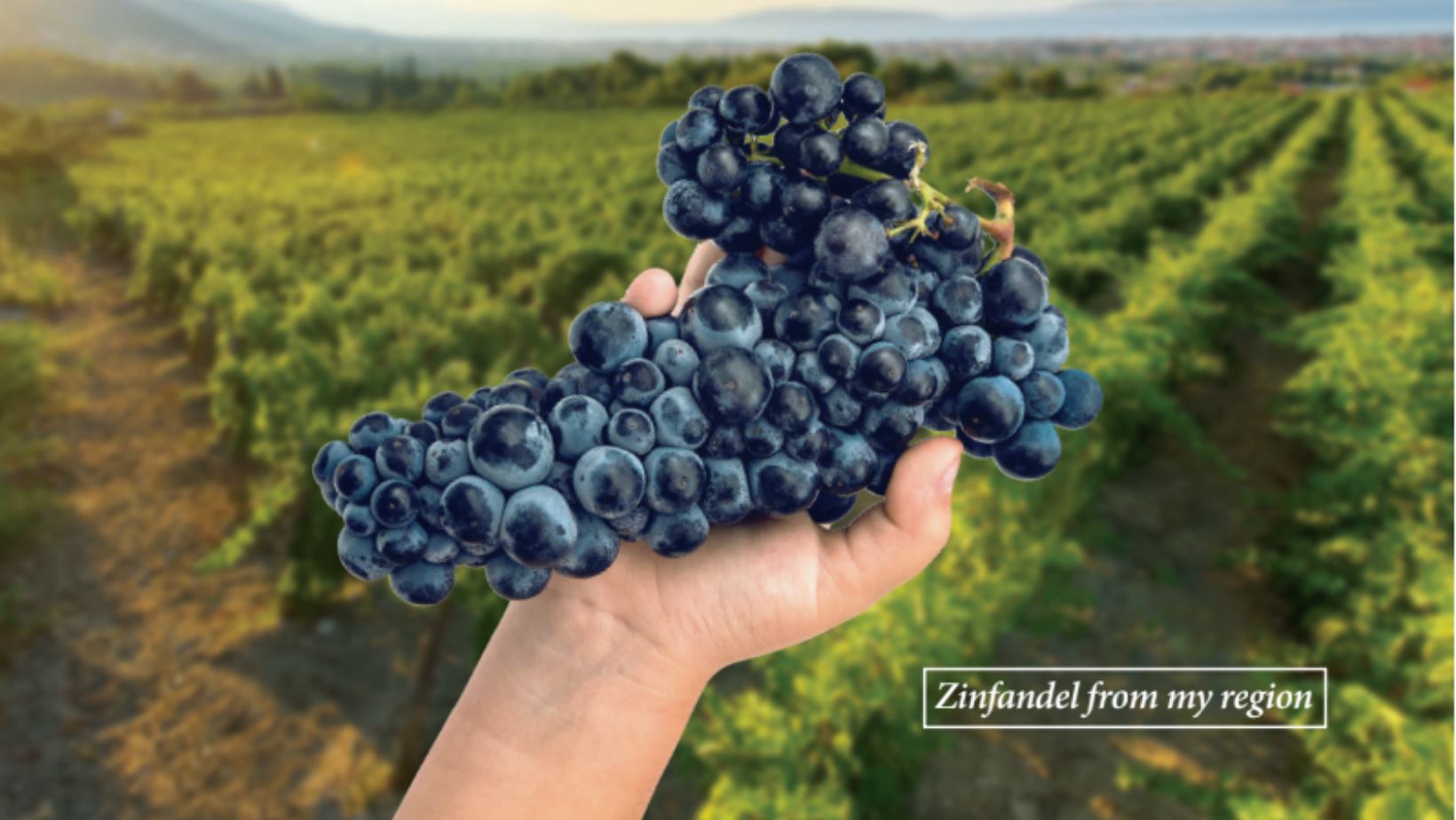
Geographical indications and designations of origin are protected as intellectual property to prevent their misuse or unauthorized use. They contribute to the higher market value of products and services corresponding to their specific characteristics and the reputation thus acquired.
The initiative came from the winemakers themselves, who were helped by the City of Kaštela, RERA, and the Zora Cluster to emphasize the quality and value that Kaštelanski crljenak has on the market. Thus, in addition to the already celebrated international wines Zinfandel and Primitivo, whose ancestral home is right in the Kaštela vineyards, Kaštelanski crljenak should get added value.
The 12 winemakers who officially carry Kaštelanski crljenak origin are: Anton Kovač and Ivan Kovač Matela in Kaštel Sućurac, Vlado Perišin and Jakov Bedalov in Kaštel Kambelovac, Anton Kovačev in Kaštel Lukšić, Dražan Krola and Ivica Kovačević in Kaštel Stari, Marin Milan, Ivica Radunić and Ante Kuzmanić in Kaštel Novi and Neven Vuina and Karlo Žanić in Kaštel Štafilić.
Kaštelanski Crljenak is an old, almost forgotten Croatian variety that has recently occupied the domestic and foreign wine-growing public. Namely, it was determined that Kaštelanski Crljenak and the American variety Zinfandel have identical genetic profiles, i.e., the same variety of wine that helped solve the mysteries of its origin.
For more on lifestyle in Croatia, follow TCN's dedicated page.
True Kaštela Crljenak Label Awarded at Creative Spring Days
June 17, 2021 - As part of the Kaštela Creative Spring, a Wine and Gastro Week was held in which the label of excellence, True Kaštela Crljenak, was awarded.
The label is primarily intended for labeling high-quality wines produced from the Kaštela Crljenak variety. The label is awarded to wine producers who have production areas in the area of the town of Kaštela and who are entered in the Register of Grape and Wine Producers, reports Dalmacija Danas.
The initiative to design the label of excellence came from Kaštela winemakers and was supported by Mayor Denis Ivanovic and the Tourist Board. In the Bedalov tasting room, an award ceremony of excellence was held for Kaštela winemakers, and eleven of them carried the label of excellence. Namely, Ante Kuzmanić, Karlo Žanić, Ivica Kovačević, Dražen Krolo, Neven Vujina, Ivica Radunić, Anton Kovačev, Vlado Perišin, Marin Milan, Jakša Bedalov and Ivan Kovač Matela are Kastela winemakers whose wines carry the label of excellence.
"Dražen Krolo, a winemaker from Kaštela, planted his vineyard in the Dalmatian hinterland. He was one of the first to plant Kaštela Crljenak in 2003, knowing that it was a variety that originated in this area.
It is a variety that has disappeared from this area for no reason; it is challenging to make wine. We struggled a lot for a couple of years until we got used to it, but we didn’t regret it. This crljenak is, indeed, a brand in the world, and every promotion of crljenak and raising it to a higher level are commendable," said Krolo.
Found 20 years ago
"The mark of excellence is, of course, the wind in the back, one step higher in branding. We are a small group in Kaštela, but we are trying to bring the Kaštela Crljenak to an international level," said Radunić, in whose vineyard the root of zinfandel was found twenty years ago.
"The city of Kaštela has been supporting Crljenak for many years. It has already become our brand, and it still needs to be branded. Through the Creative Spring Days, there is a special emphasis on Kaštela Crljenak, and winemakers will definitely have the support of the City," said the Mayor of Kaštela Denis Ivanović.
Learn all about Croatian wines on our Total Croatia page.
For more on lifestyle in Croatia, follow TCN's dedicated page.
Marina Kastela Yacht Fire: Five Yachts Destroyed, Millions of Euros in Damages
May 30, 2021 - The Marina Kastela yacht fire on Saturday night destroyed 5 yachts and damaged 18. Fortunately, no one was hurt.
An unprecedented fire broke out last night at around 8:30 pm on one of the anchored yachts in Marina Kastela. Five luxury boats about 20 meters long were completely burned. The damage will be in the millions of euros, reports Slobodna Dalmacija.
In an instant, a fire raged on a yacht for reasons not yet determined. Crew members immediately tried to put out the fire, but unfortunately, without success.
After the ropes burned on the fire-affected yacht, the ship began to float around other anchored yachts worth millions, and it didn't take long for the flames to engulf the other ships. The fire brigade immediately was at the scene and started fighting the flames, which left behind black clouds of thick smoke, making it difficult to see Split from Kastela.
"This is terrible; I've never seen a fire like this before. At that moment, that yacht was all on fire and, unfortunately, it ended in flames. People were scattering in all directions; believe me, it looked like a state of war. People were screaming, jumping for help, and suddenly it erupted even larger. That burning ship suddenly moved away from where it was moored, and the flames immediately engulfed the other yachts. Plastic was burning, probably also oil derivatives that were in them, so it is not surprising that there was so much black smoke," said one shocked local near Marina Kastela.
DVD Kastel Gomilica also arrived in Marina Kastela. The owner of Marina Kastela, Joško Berket, exclusively told Slobodna Dalmacija about the incident and how grateful he was that no one was injured.
"I can confirm to you that five yachts burned and that the material damage was extremely great. The fire broke out on one of the yachts destroyed by the fire and the cause, although not yet confirmed, is definitely a human factor. So it's not about installation and the like. A fire broke out in the yacht at one point, and the crew onboard went to put out the fire on their own. Their ropes burned in flames in the middle of the fire, and the ship began to float towards other anchored yachts.
The flames immediately engulfed another yacht and then three more. All firefighters are on the ground and the employees of Marina Kastela, and fortunately, the wind was not blowing at the time of the fire. The situation would be much worse, and it is still catastrophic. The fire was localized around 9:40 pm. The ships in flames were pulled out and towed from Marina Kastela to Kastela Bay," Marina Kastela owner Joško Berket said exclusively for Slobodna.
Last night, the mayor of Kastela, Denis Ivanović, immediately came to the scene and said that the situation was awful. Still, thanks to the composure of people and firefighters, the situation slowly calmed down at around 9:30 pm.
"The most important thing is that people are alive and healthy," Ivanović said briefly.
Crews and tourists were evacuated from the ships at around 9:15 pm, and the authorities in the Marina tried to provide them with temporary accommodation.
A big problem in organizing the evacuation was created by many Kastela residents and curious people who came to see what was happening, regardless of the possible danger.
Marina Kastela was full yesterday because, as a rule, there is a shift of guests on Saturdays. Some leave, and others come.
As Berket confirmed to Slobodna, three of the five boats were pulled from Marina Kastela into the bay, where two completely burned and sank to the seabed, one was towed to a nearby beach, and two burned on a pontoon in the Marina.
"All boats are fully insured, there was no major damage in Marina Kastela, and the police are now doing their job to determine the circumstances and cause of the fire," said Berket, who unofficially told Slobodna that the fire started from the kitchen of the destroyed yacht.
When asked if this incident will affect the Small Shipbuilding Days, which starts next week in Marina Kastela, Berket said that it would not because the event is being held in a completely different part of Marina Kastela.
For more news in Croatia, follow TCN's dedicated page.
International Conference On Climate Change Held in Kaštela
ZAGREB, 13 April, 2021 - An online international conference on climate change was held in Kaštela, outside Split, on Tuesday to raise public awareness of the need to strengthen Croatia's capacity to deal with this matter.
The conference was organised by RERA, the public institution for coordination and development of Split-Dalmatia County as one of 11 partners in the EU project "Change We Care" between Croatia and Italy.
Croatia and Italy are to prepare joint projects to alleviate the consequences of climate change and include them in the new EU programming period 2021-2027.
Branka Pivčević Novak of the Ministry of Economy and Sustainable Development stressed the importance of developing the first national action plan on climate change, saying that the modernisation of the national meteorological network in Croatia was very important.
Speaking online from Italy, the "Change We Care" project leader Davide Bonaldo said the project envisaged evaluating the current situation and newer trends in physical and ecological processes along the Adriatic coast, making projections of scenarios in climate change conditions, and identifying measures to adapt to climate change in five pilot areas.
Those are Vransko Jezero lake, the Neretva river delta, the Jadro river and the Kaštela Bay in Croatia, and Mula di Muggia and the Po river delta in Italy.
The end goal of the project is to establish adaptation measures to deal with climate change, Bonaldo said, adding that local communities would benefit the most.
Climate change affects the low-lying coastal area, which is urbanised, as well as the cultural heritage and tourism, so the goal of this plan is the implementation of an integral approach to the management of the Kaštela coastal area in the context of climate change, said Professor Martina Baučić of the Split Faculty of Civil Engineering.
For more about ecology in Croatia, follow TCN's dedicated page.
Nine Earthquakes in the Adriatic Sea in Last 56 Hours
March 30, 2021 - Nine earthquakes in the Adriatic Sea were recorded in the last 56 hours, felt by citizens from Split to Sinj.
24 Sata reports that on Monday, March 30, shortly after 10 pm, residents in the wider Split area felt the ground shake. Rattled citizens reported that they felt an earthquake in Split, Kaštela, Glavice, and Sinj
The EMSC reported that the earthquake was 3.1-magnitude on the Richter scale and that the epicenter was 52 kilometers from Vela Luka. And just before it there was a 2.9-magnitude earthquake with an epicenter 30 kilometers from Komiža on Vis.
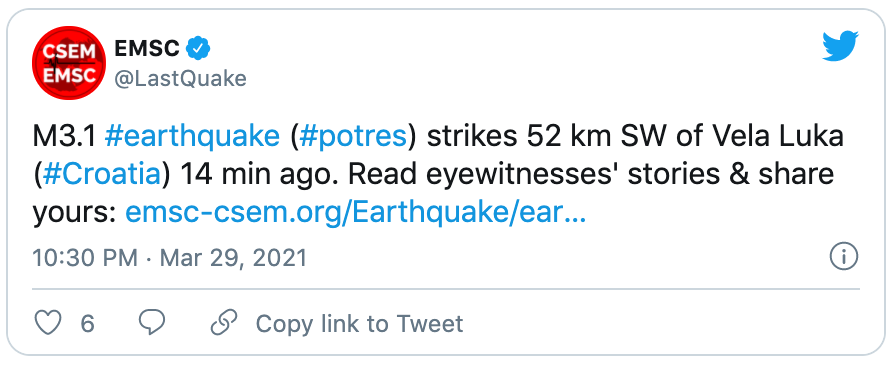
"There was a rumble, it shook briefly but strongly," said one witness. "It rumbled for 6-7 seconds and shook briefly," said another. "I was really scared, it shook good," read another. Split singer Marijan Ban even took to Twitter to confirm that he felt the quake, too.

The first report of the earthquake arrived at 10:20 pm from Kaštel Sućurac. It was the ninth earthquake in the Adriatic Sea in the last 56 hours, the EMSC reported.
A bit later, seismologists from the Seismological Service announced that at 22:17 they recorded an earthquake with an epicenter 3 km south-southeast of Maovici near Vrlika, meaning that the Split area was shaken by three earthquakes just a few minutes apart!

Over the last few days, several slightly stronger earthquakes have been recorded in the Adriatic Sea, in the waters nea Split. The strongest so far was 5.5-magnitude on the Richter scale.
None of these earthquakes have been strong enough to cause any damage.
The EMSC was established in 1975 on the European Seismological Commission's recommendation, given that the Euro-Mediterranean region showed potentially dangerous seismic activity. It is headquartered in Bruyères le Châtel, a municipality on the southern outskirts of Paris, and is a non-profit NGO.
EMSC uses a unique earthquake detection system thanks to the collaborative work from eyewitnesses and data collection from seismic institutes provided by 85 institutes as members from 56 different countries, thus giving users real-time earthquake information for seismic events.
To read more about news in Croatia, follow TCN's dedicated page.


